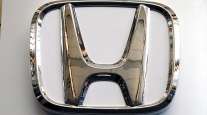Senior Reporter
NHTSA Endorses Canadian Standard for Stronger Trailer Underride Guards

The National Highway Traffic Safety Administration last week issued a proposed rule to upgrade U.S. standards for rear-impact guards that enhance truck and trailer underride protection, in an effort to reduce the severity of passenger vehicle crashes into the back of trailers.
The proposal adopts standards used by Canada, which require rear-impact guards to provide sufficient strength and energy absorption to protect occupants of compact and subcompact passenger cars striking the rear of trailers at 35 mph.
The current U.S. standard requires protection for crashes of up to 30 mph.
“Robust trailer rear-impact guards can significantly reduce the risk of death or injury to vehicle occupants in the event of a crash into the rear of a trailer or semitrailer,” NHTSA Administrator Mark Rosekind said in a statement.
“This is a good first step,” said Russ Rader, a spokesman for the Insurance Institute for Highway Safety, “but our tests show that trailer manufacturers can go quite a bit further beyond the Canadian standard.”
The group, which has been pushing for improved underguard protection, tested underguards in 2011 and 2013.
NHTSA estimates that 93% of new trailers sold in the United States have demonstrated compliance with the more stringent performance that is being required.
Among the leading trailer makers already installing the equipment are Wabash National Corp. and Hyundai Translead.
“As many of our customers haul beyond U.S. borders, we’ve been manufacturing our rear-impact guard to meet and exceed the more stringent Canadian standard since Sept. 1, 2007, when the standard went into effect,” Dick Giromini, CEO of Wabash, said in a statement last week.
Les Jaworski, general manager of research and development for Hyundai Translead, said that, for many years, the company has manufactured trailers that met both U.S. and Canadian standards for sale in each market. However, Jaworski said, the company made a decision in 2011 to manufacture all of Hyundai’s trailers to meet the Canadian underguard standard.
But there are still issues to sort through, Radar said, because the Canadian standard does not adequately address crashes where the impact is at the outer edges of the guard. “The standard doesn’t deal with the underride crashes comprehensively,” he added.
NHTSA’s proposed rule follows an advance notice of proposed rulemaking on rear underride crash protection of single-unit trucks issued earlier this year. “We’re always looking at ways to safeguard the motoring public, and today’s announcement moves us forward in our mission,” Rosekind said.
The agency is accepting comments on the notice of proposed rulemaking for 60 days.
“ATA is optimistic this proposal will be a step forward for highway safety,” said Sean McNally, spokesman for American Trucking Associations.
The annual average incremental material and fuel cost of requiring all applicable new trailers in the fleet to have the upgraded guards would be $13 million, according to NHTSA.
Its notice of proposed rule making is in response to a petition from the Insurance Institute for Highway Safety, the Truck Safety Coalition and Marianne Karth, who has advocated for greater truck safety after the death of two daughters in May 2014.
In excessive underride crashes, the passenger vehicle underrides so far that the rear end of the struck vehicle enters the passenger compartment of the striking vehicle, NHTSA said.
Passenger compartment intrusion “can result in severe injuries and fatalities to occupants contacting the rear end of the struck vehicle,” the proposal said. “A rear-impact guard prevents PCI when it engages the smaller striking vehicle and stops the vehicle from sliding too far under the struck vehicle’s bed and chassis.”




